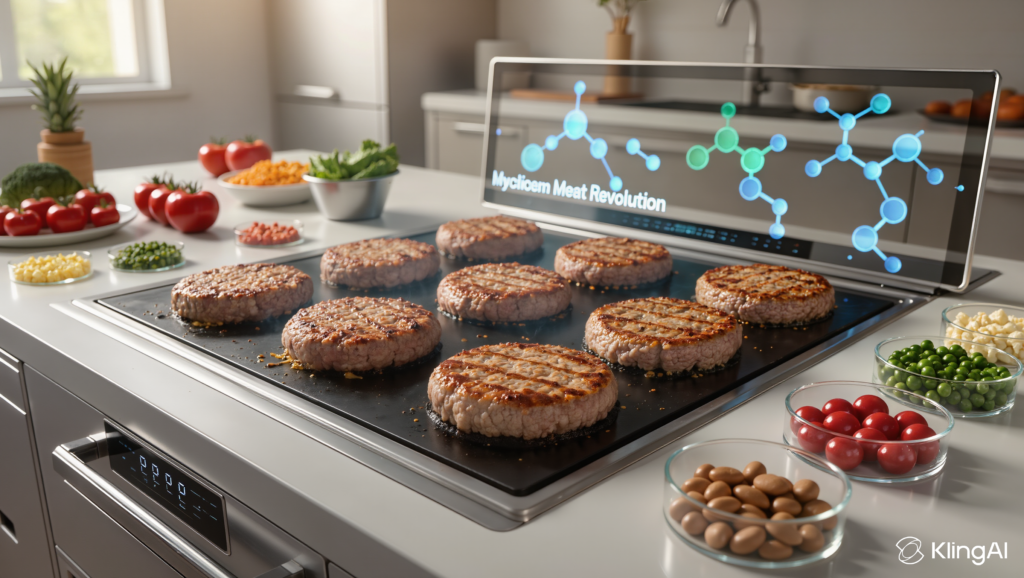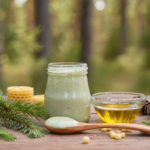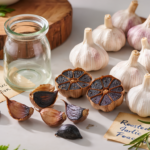Move over Impossible Burger and Beyond Meat—there’s a new contender on the protein scene that’s neither animal nor just plant. Mycelium meat, made from the intricate root-like network of fungi, is rapidly gaining attention from food scientists, startups, and adventurous eaters as the future of sustainable, delicious, and nutritious meat alternatives. Can mycelium meat deliver where plant-based burgers sometimes fall short—on taste, nutrition, environmental impact, and consumer satisfaction? The answer might surprise you.
What is Mycelium Meat?
Mycelium is the fast-growing, filamentous tissue that forms the foundation of fungi. Unlike the mushrooms you see above ground, mycelium lives as a sprawling network underground or in substrates, pumping out nutrients and communicating with plants. Food innovators are harnessing these networks—not the mushroom caps—to create mycelium-based meat with strikingly meat-like taste and texture.
- Structurally ideal: Mycelium naturally mimics the fibrous, chewy matrix of animal muscle. Its cell wall, made mostly of chitin, delivers the “bite” and mouthfeel that plant proteins often lack.
- Minimal processing: Unlike many plant-based burgers, mycelium meat often relies on simple ingredient lists and less artificial texture-boosters or binders.
Taste and Texture: Why Mycelium Is Winning Fans
Plant-based burgers may imitate beef well, but many consumers complain of odd aftertastes, mushy texture, or flavor fatigue. Mycelium changes the game:
- Umami magic: Mycelium naturally houses glutamate and other savory compounds—the same building blocks behind animal meat’s umami punch.
- Realistic chew: The flexible, three-dimensional lattice of mycelium delivers tenderness and bite, with no need for gums, methylcellulose, or excessive processing.
- Versatility: Mycelium can be transformed into whole-cuts (like steaks, chicken breasts, or bacon) or shredded forms, opening doors for recipes far beyond burgers.
Blind taste tests suggest mycelium meats can outperform both pea and soy-based alternatives—sometimes even rivaling conventional beef in flavor satisfaction.
Nutritional Value: Not Just “Protein Filler”
Mycelium meat’s nutrition stack is impressive:
- Complete protein: Mycelium provides all nine essential amino acids, with 11–12.6 g protein per 100g—matching chicken or beef in protein digestibility and quality.
- Rich in fiber: Contains soluble beta-glucans and insoluble chitin, boosting gut health and aiding cholesterol management—benefits rarely found in animal meats.
- Micronutrient load: Delivers significant zinc, iron (in bioavailable form), folate, and B vitamins, including riboflavin and niacin, supporting immunity and energy metabolism.
- Low in fat: Almost zero saturated fat and minimal overall fat—heart-healthy with a clean nutritional profile.
- Supports healthy microbiome: Early research suggests mycelium can nurture beneficial gut bacteria.
Safety studies for Neurospora crassa (one key mycelium strain) confirm it’s allergen-free, toxin-free, and generally regarded as safe for human consumption.
Environmental Impact: Beyond “Green” Claims
The real revolution may be here. Unlike plant farming (which demands land, water, and often chemical inputs) or animal husbandry (with its methane emissions, huge water, and land use), mycelium meat:
- Grows quickly in vertical fermentation tanks using upcycled agricultural and food waste as substrates—no fields or pasture needed.
- Uses up to 99% less land, water, and carbon than beef when produced at scale.
- Can be optimized for rapid yield, minimal ingredient wastage, and circular economy waste reuse.
Life cycle analyses show swapping just 20% of ruminant meat for mycelium protein could halve global farmland use and methane emissions by 2050—without risking protein deficiency or sustainability.
Some critics highlight variable energy use and water input depending on fermentation methods as a challenge for full sustainability, but ongoing innovations like substrate recycling and integrated renewable energy can address these issues.
Production and Innovation: From Lab to Table
Mycelium meat startups (Meati™, Libre Foods, Pacifico Biolabs, Mush Foods, and others) have quickly progressed from R&D to scale-up. Their tactics include:
- Strain selection: Using high-performing fungal strains—like Neurospora, Fusarium, and oyster mushrooms—for optimal texture, taste, and nutrition.
- Fermentation optimization: Controlling growth conditions to create custom “muscle-like” structures, experimenting with substrate flavoring, stress adaptation, and rapid environmental simulation.
- Bioprocess development: Leveraging AI and high-throughput screening to perfect growing conditions and non-GMO enhancements for taste and nutrition.
- Simplicity: Many mycelium meats use five ingredients or less, for clean labels and easy digestion, outshining plant-based competitors with lengthy ingredient lists and ultra-processing.
A survey found around 50% of US consumers are willing to try “mycoprotein,” “mycelium protein,” and “nutritional fungi protein”—strong evidence for growing mainstream interest.
Mycelium vs. Plant-Based Meat: How Do They Stack Up?
| Feature | Plant-Based Burger | Mycelium Meat |
|---|---|---|
| Protein source | Pea, soy, wheat | Fungal mycelium |
| Fiber content | Low | High (β-glucans, chitin) |
| Sensory experience | Often processed, can be mushy | Chewy, savory, “real meat” mouthfeel |
| Micronutrient profile | Variable, sometimes fortified | Iron, zinc, B vitamins naturally present |
| Ingredient list | 10+ additives common | Often 5 or fewer |
| Sustainability | Better than meat, but land/water intensive | Outstanding (99% less land/water/carbon) |
Health Benefits: Beyond Just “Meatless”
Mycelium meats could bring unique health advantages:
- Gut and heart health: Thanks to fiber and beta-glucans, can help lower cholesterol and support digestion.
- Immunity and metabolism: Zinc and B vitamins are crucial for immune and metabolic health.
- Low allergenicity and clean label: Fewer allergens, toxins, and residues than animal meats or highly processed plant proteins.
- Weight and wellness: High protein, low fat, and high fiber support satiety, lean muscle maintenance, and good overall nutrition.
Challenges and The Road Ahead
- Scale and affordability: Mycelium meat production requires further scale-up for mass-market access and affordability, but public and private investment is rapidly increasing.
- Consumer perceptions: Education is needed—people may be put off by “fungi meat,” but taste tests and clean labels can help overcome initial hesitations.
- Regulation and safety: Most key strains are GRAS, but regulatory approval and full transparency on growing practices are crucial for trust.
The Bottom Line: Mycelium—The Meat Revolution Beyond Plants
Mycelium meat is much more than a culinary curiosity. It’s redefining the meat alternative category with savory taste, substantial nutrition, incredible environmental benefits, and minimalist labels. While plant-based burgers started the modern meatless movement, mycelium foods are positioned to be the next revolution—and perhaps, the true future of meat.
From tasty burgers and “chicken” to whole-cut steaks and bacon, expect to see more mycelium protein options on shelves and restaurant menus in the next few years. If sustainability, taste, and health top your priorities, get ready to embrace the power of the fungal kingdom—your taste buds (and the planet) might thank you.
Did you find this article helpful? Support us by following us on our social media pages—Youtube, Instagram, Facebook, Pinterest, Twitter (X))—and stay up to date on other exciting topics related to natural health and wellness.








